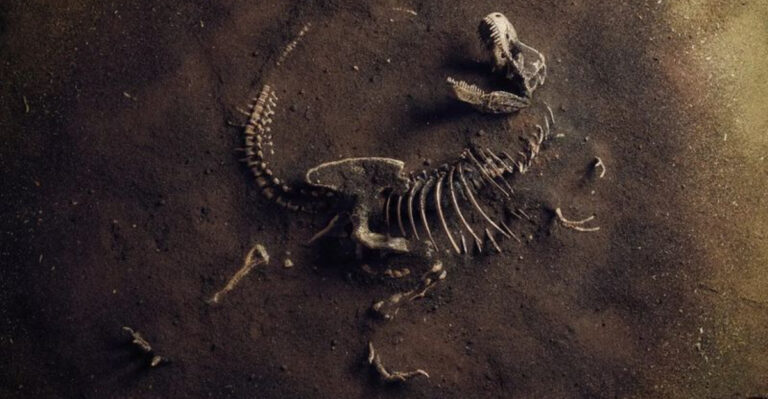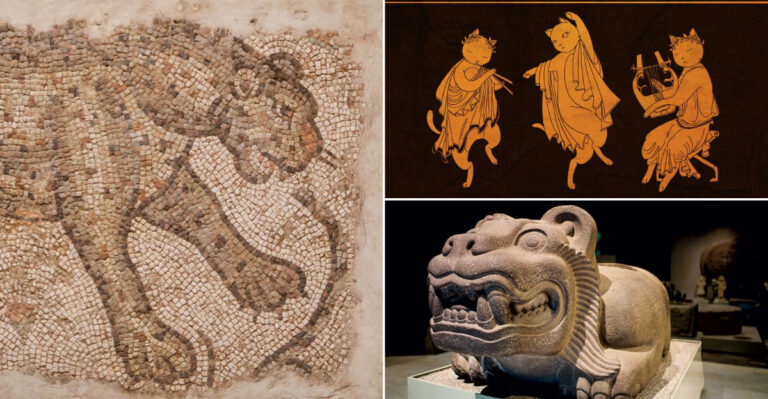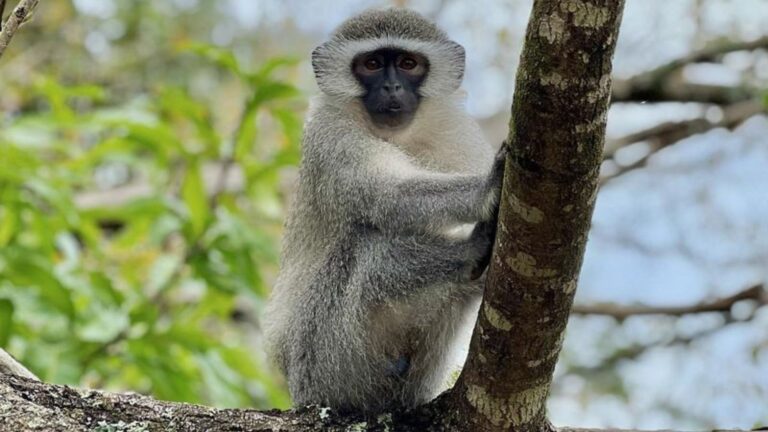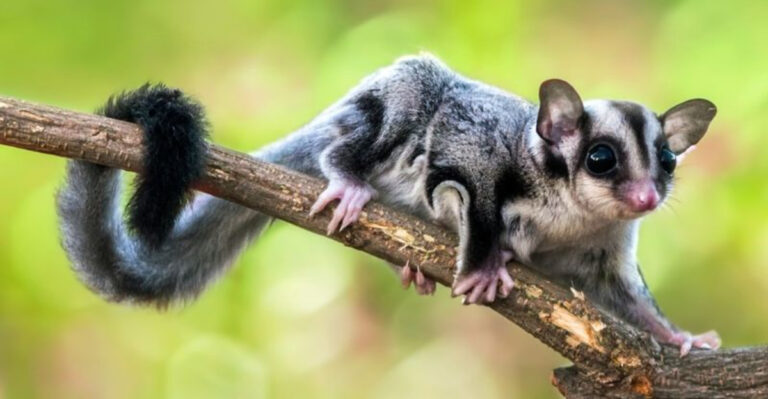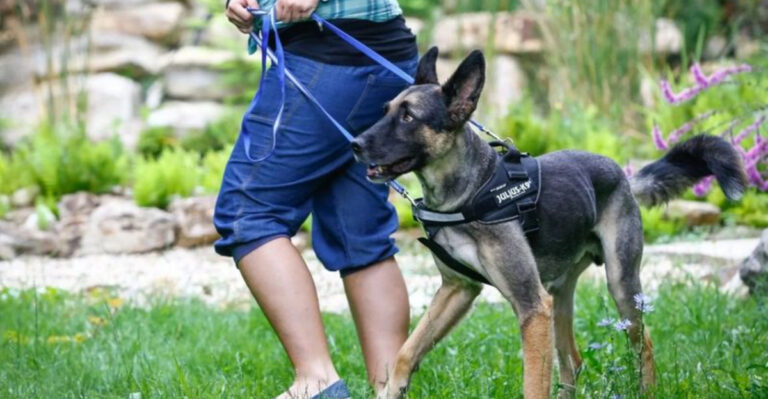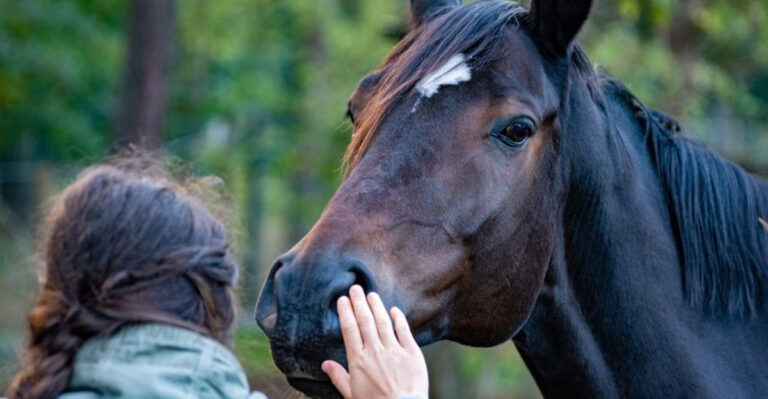10 Snake Species That Warn Before They Strike (And 4 That Attack Without Warning)

Ever wondered which snakes give you a heads-up before launching an attack? While many serpents offer clear warning signals, others strike with deadly stealth.
Understanding these behaviors could literally save your life if you encounter these reptiles in the wild. Let’s explore the snakes that politely announce their intentions and those that prefer the element of surprise.
1. Rattlesnakes
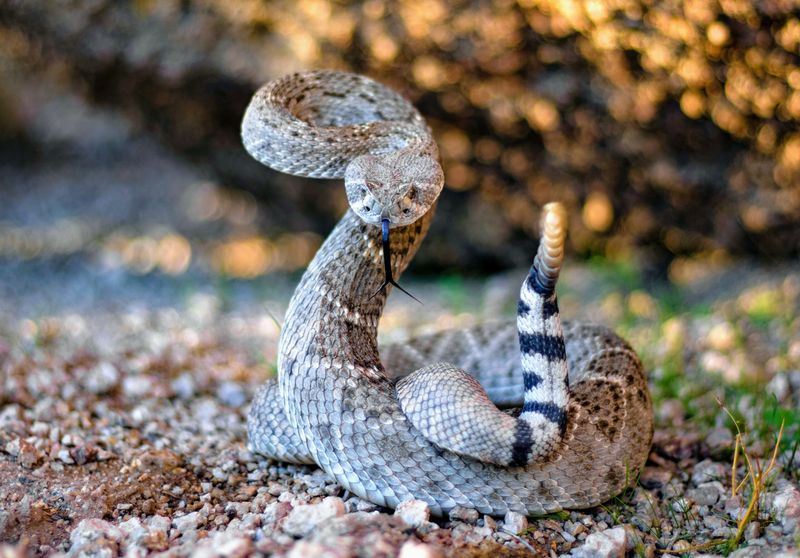
That famous buzzing sound isn’t just for show – it’s a serious threat display! Rattlesnakes evolved specialized tail segments that create their distinctive warning when vibrated rapidly against each other.
Most rattlers prefer to avoid confrontation and will sound their alarm when feeling threatened. This fair warning system gives you precious seconds to back away slowly without making sudden movements.
2. Cobras
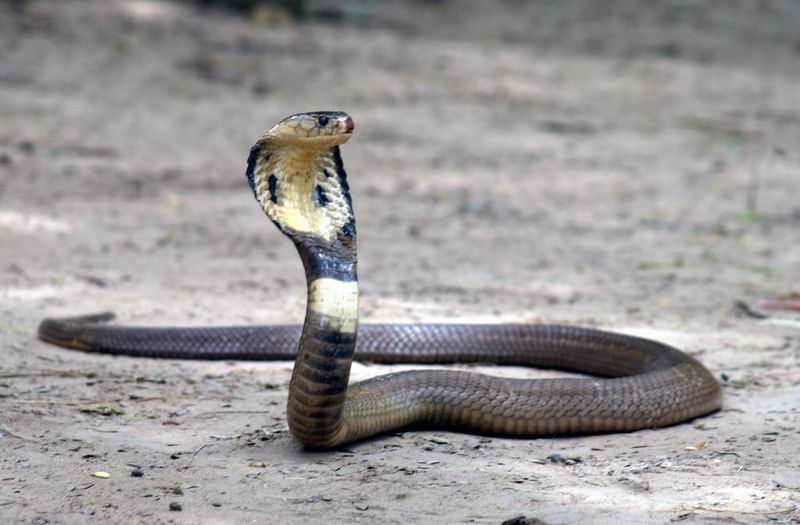
Before striking, cobras perform one of nature’s most dramatic warning displays. They raise the front portion of their body, flatten their neck ribs to create their iconic hood, and often hiss loudly.
This intimidating posture makes the snake appear larger and more threatening. Unlike many aggressive species, cobras typically use this display as a last resort, preferring to escape rather than engage in confrontation.
3. Puff Adders
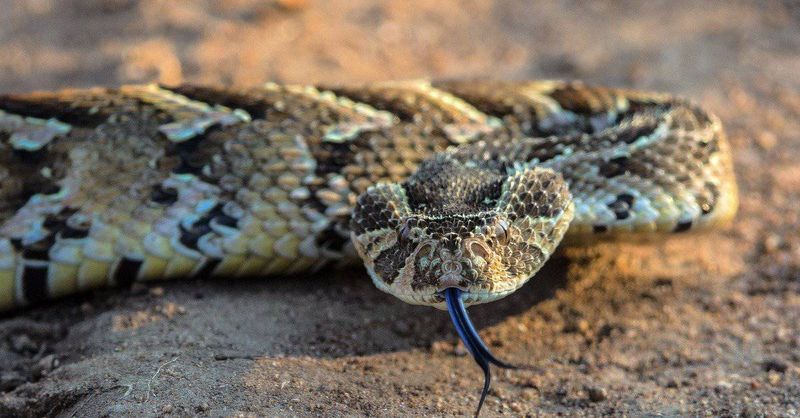
Loud and proud, puff adders inflate their bodies dramatically while releasing a distinctive, powerful hiss when threatened. Their bodies literally swell up like balloons!
Despite being responsible for many snake bites in Africa, these chunky vipers actually prefer to avoid confrontation. The warning sound gives potential predators or careless humans a chance to back off before the snake feels forced to defend itself.
4. Cottonmouths

When a cottonmouth feels threatened, it coils defensively and opens its mouth wide, showcasing the startlingly white interior that gives this water-loving pit viper its name.
This unmistakable warning display might be accompanied by tail vibrations and a musky defensive odor. Despite their intimidating reputation, studies show cottonmouths typically prefer flight over fight when given the chance to escape.
5. Eastern Diamondbacks
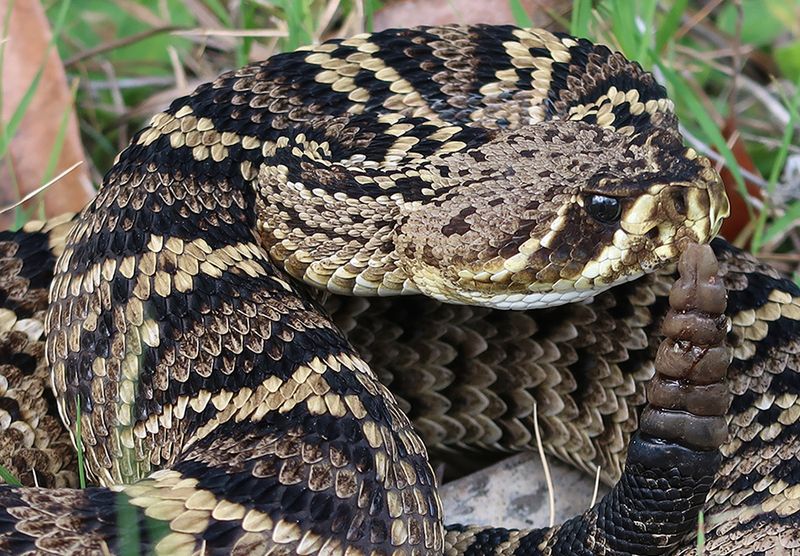
America’s largest rattlesnake doesn’t mess around with subtle hints! When threatened, the eastern diamondback forms a tight defensive coil with its head centered, rattles vigorously, and hisses loudly.
Their warning is proportional to their danger – they deliver more venom than any other rattlesnake. Despite their fearsome reputation, these impressive reptiles almost always give fair warning before striking, preferring to save venom for hunting.
6. Black Mambas
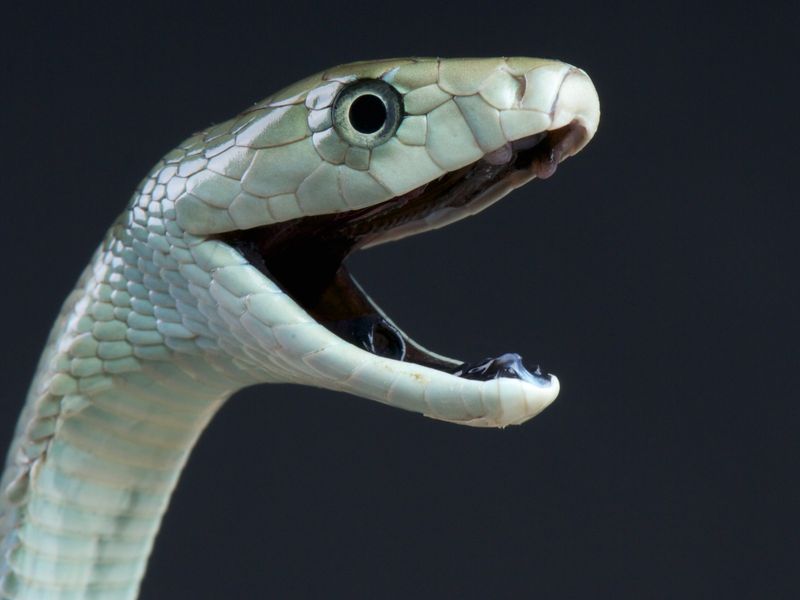
Despite their reputation for aggression, black mambas actually offer clear warnings before attacking. They’ll raise their heads, open their mouths to display the black interior, and flatten their neck region.
The problem? Their warnings are briefer than other species. These lightning-fast snakes can strike repeatedly with deadly precision, so when a mamba shows these signs, immediate but careful retreat is your only safe option.
7. Gaboon Vipers
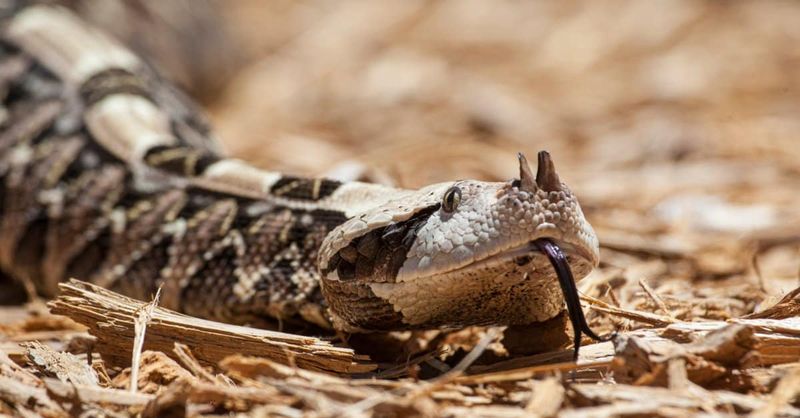
Looking like fallen leaves with their incredible camouflage, Gaboon vipers issue warnings through loud, sustained hissing that sounds surprisingly like a small leaf blower! Their massive triangular heads rear back while their bodies inflate visibly.
Despite possessing the longest fangs of any snake (up to 2 inches!) and enormous venom glands, these giants are surprisingly reluctant to bite. Their clear warning system reflects their preference to be left alone.
8. King Cobras

The largest venomous snake in the world doesn’t strike without ceremony! King cobras raise up to one-third of their body length off the ground, spread their impressive hood, and produce a bone-chilling hiss-growl combination.
Unlike many snakes that hiss by forcing air through their glottis, king cobras have specialized throat ribs that create their distinctive warning sound. This majestic display gives even the most foolhardy humans time to reconsider their proximity.
9. Spitting Cobras
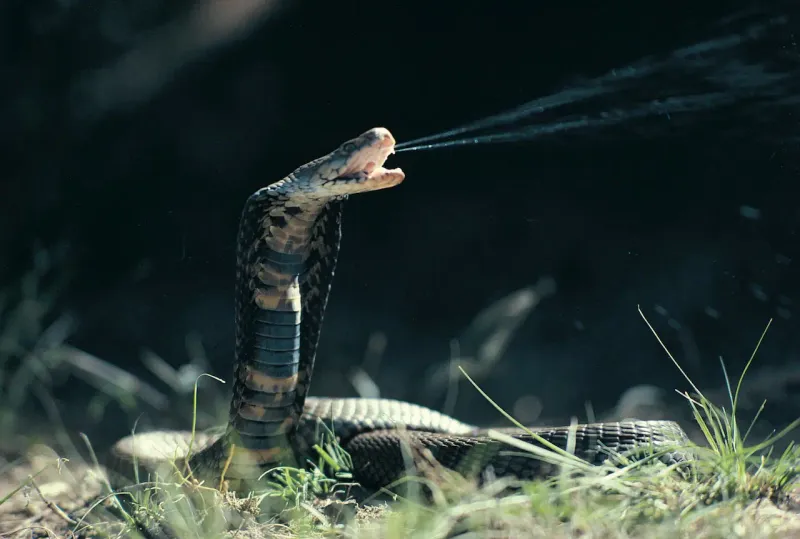
Talk about a clear warning system! Before launching their famous venom spray, spitting cobras rear up, expand their hoods, and fix their gaze on their target’s eyes.
This distinctive pre-attack ritual serves as a final warning before they unleash venom with remarkable accuracy up to 8 feet away. The specially modified fangs create a fine spray rather than a stream, targeting the sensitive eyes of potential threats.
10. Saw-scaled Vipers
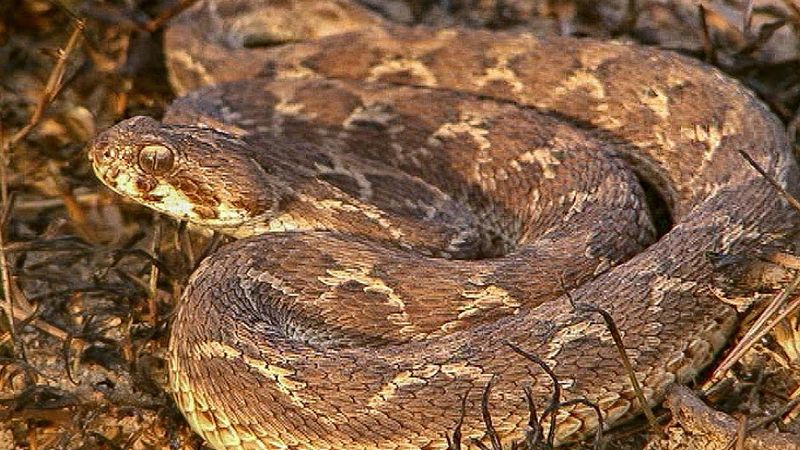
Forget rattles – these innovative desert vipers create warning sounds by rubbing specialized scales together! When threatened, they form C-shaped coils and rapidly scrape their serrated scales against each other, producing a distinctive rasping sound.
This unique “sizzling” warning might be less famous than a rattlesnake’s buzz, but it’s equally effective. Despite their small size, these highly venomous snakes are responsible for more human deaths than many larger species.
11. Death Adders
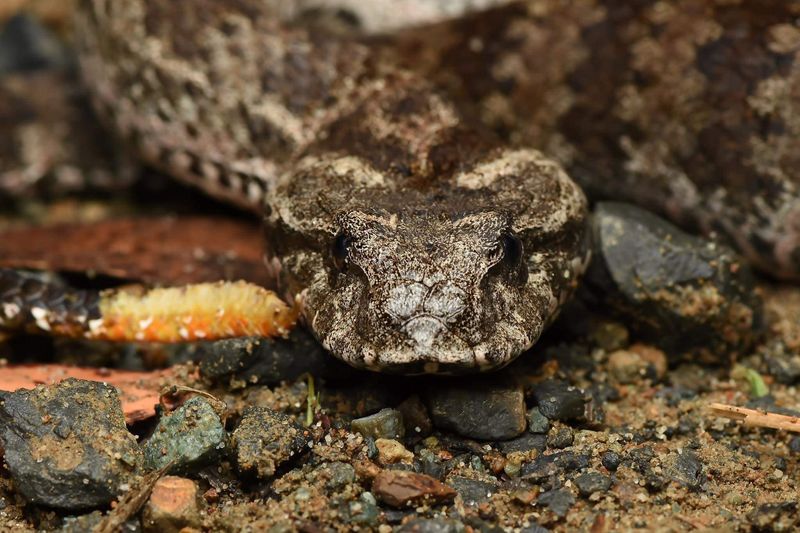
Wiggling their worm-like tail tips as bait, death adders lure unsuspecting prey within striking range. For humans, unfortunately, there’s no such warning – these masters of camouflage strike with lightning speed from hidden positions.
Their attack strategy relies entirely on surprise. Unlike defensive snakes that warn before striking, death adders are pure ambush predators that blend perfectly with forest debris and strike before victims realize danger is present.
12. Inland Taipans
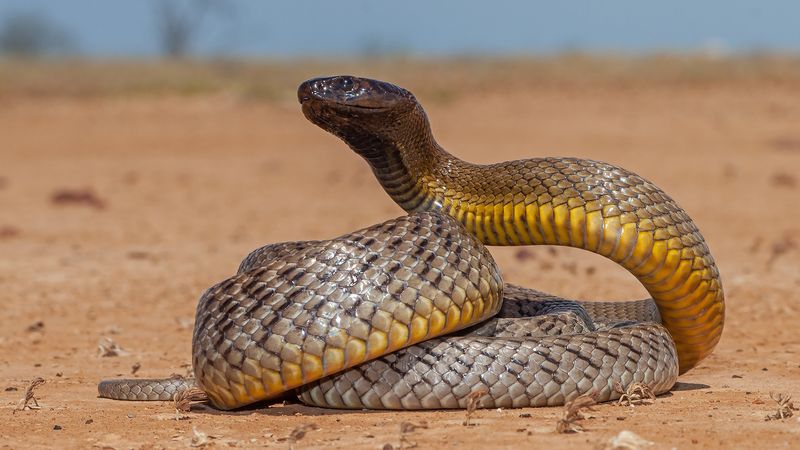
Don’t expect a courtesy notice from the world’s most venomous land snake! Inland taipans strike with astonishing speed and precision without any warning displays or defensive posturing.
Their venom is specifically evolved to kill warm-blooded prey instantly. A single bite delivers enough neurotoxins to kill 100 adult humans. Fortunately, these deadly snakes avoid human contact and inhabit remote regions of central Australia where encounters are rare.
13. Tiger Snakes
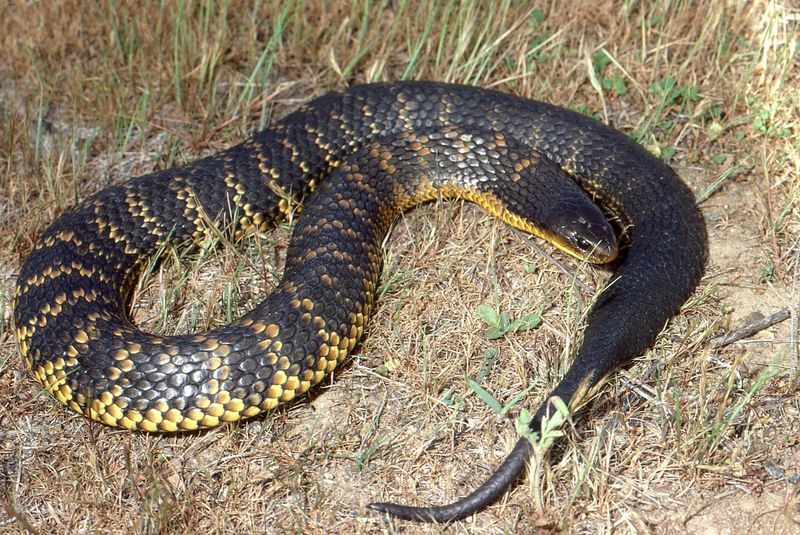
Despite their bold banded patterns that scream danger, tiger snakes often strike without the warning displays common in other venomous species. Their defense strategy relies on explosive, unexpected strikes when cornered or surprised.
These Australian snakes combine potent venom with aggressive temperament. Unlike rattlesnakes or cobras that prefer to warn first, tiger snakes frequently launch into attack mode with minimal provocation, making them particularly dangerous during accidental encounters.
14. Blue Kraits

With gorgeous blue-black bands, blue kraits might look beautiful, but they’re deadly nighttime hunters that strike without warning. During daylight hours, they’re surprisingly docile, but their personality completely changes after dark.
Nocturnal and highly venomous, these Asian snakes silently approach sleeping victims. Many krait bites occur when people roll onto them while sleeping in rural homes. Their neurotoxic venom can cause respiratory failure within hours if left untreated.

